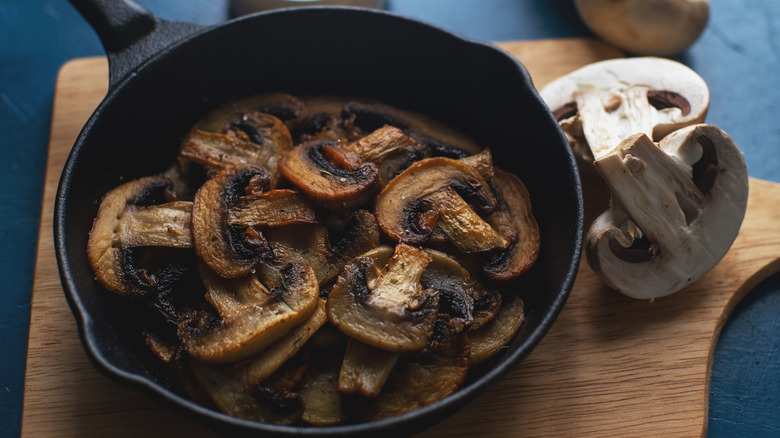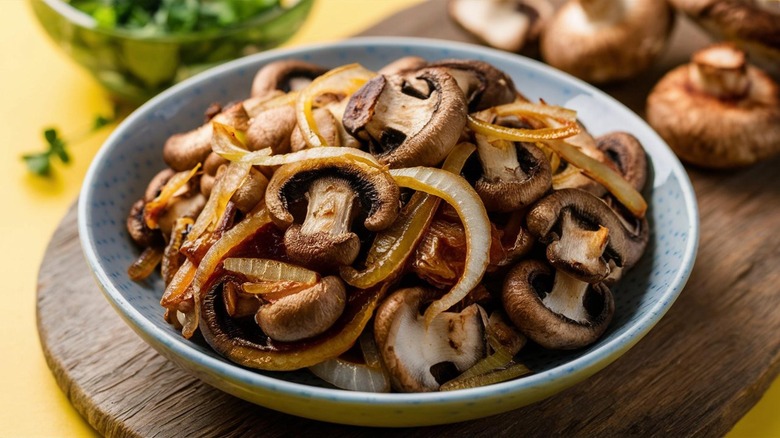Why You Need To Give Mushrooms Space When Sauteeing
Mushrooms are among some of the most versatile and beloved ingredients in the culinary world, prized for their earthy flavor and meaty texture. They're enjoyed in a multitude of savory recipes, from mushroom fajitas to cream of mushroom soup. Plus, when cooked correctly, they make for a popular meat substitute. Their rich umami taste, derived from glutamates and other natural compounds, gives them a depth of flavor that's satisfying and palatable.
Mushrooms offer a unique taste and texture unlike any vegetable or legume (mushrooms are fungus, not plants), but they aren't for everyone as their spongey, velvety texture may turn some people away. When it comes to cooking mushrooms, technique matters — especially if you want to unlock their full potential.
The Takeout recently had the chance to speak with Chef Rob Rubba, the James Beard Foundation's 2023 Outstanding Chef currently operating the Michelin-starred restaurant Oyster Oyster in Washington D.C. (Esquire's 2022 Restaurant of the Year). Rubba expounded on the optimal way to sauté mushrooms, which may come as a surprise to those who have grown accustomed to giving in to the sponginess of mushrooms, allowing them to get watery when sautéing as the water will eventually evaporate anyway. While this is true (and however you choose to sauté your mushrooms will still likely produce tasty results), Rubba explained how the specific process in which you sauté your mushrooms will result in significantly different outcomes.
Avoid overcrowding your pan with mushrooms
If you're looking for soft and juicy mushrooms with a slightly rubbery exterior, then steaming them is the way to go; and feel free to overcrowd your pan with as many mushrooms as you like. But if you want to achieve caramelized mushrooms with a firm interior, crispy edges, and a meaty texture, steaming them won't create the results you desire. Keep in mind that mushrooms are made up of 80-90% water. Rubba explained how, when packed tightly in a pan, the moisture mushrooms release will create steam, preventing browning and leading to a rubbery texture. To avoid this, it's important to spread the mushrooms out in a single layer.
"Give the mushrooms space," Rubba told The Takeout. "A crowded pan will cool quickly and unevenly cook." He highlighted how temperature control is equally critical — a pan that's too hot can scorch the mushrooms before they release their water, while one that's too cool will leave them limp and undercooked.
When sautéing mushrooms, wipe them down with a moist towel and cut them into slices, but avoid cutting them too thin since they'll shrink as you cook them. Start with a hot pan over medium-high heat, add oil or butter, and stir occasionally (not constantly) to help create that perfect balance of crispy edges and tender interiors. This simple yet essential principle can be the difference between bland, soggy mushrooms and a deeply flavorful, perfectly caramelized result. Now you just need a mushroom recipe to use this technique with.

